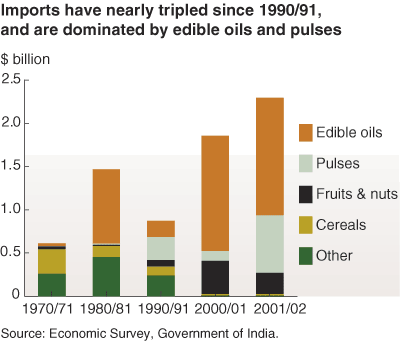Soybean Oil Market Trading Investing
Post on: 2 Апрель, 2015 No Comment

Soybean Oil Market Defined and Explained
Each bushel of soybeans produces about 11 pounds of soybean oil and about 48 pounds of soybean meal so the soybean oil market is often closely tied with developments in the soybean market when external factors come into play. It has been estimated that about one-fourth of the worlds supply of edible oil comes from soybeans so soybeans have plenty of competition from other sources. Soybean oil is used to make many diverse products such as salad and cooking oils, shortenings and margarines. Soy oil is also an increasingly important ingredient for industrial products such as paints, plastics, lubricants and biofuels.
Soybean Oil Investing
The practice of trading soybean oil is important to the food and fuel industries as soybean oil futures and options provide the foundation to stabilize often volatile soybean oil prices. Price stability is essential for those businesses that rely on soybeans for their manufacturing processes. Global soybean oil supplies fluctuate constantly due to spring planting decisions and crop progress reports, as well as variations in rainfall and temperature over the growing season. In addition, soybean oil demand never ceases to change. As a result, prices can vary substantially from day to day, and soybean traders should take note of the market volatility and impacts from intermarket factors. Investing in soybean oil appears to have merit as the need continues to grow for readily biodegradable lubricants that are low in toxicity for environmentally sensitive areas. The superior qualities of soy oil have been recognized in Europe and by the U.S. government, and developing new commercial uses for soybean oil is a research priority of the United Soybean Board (USB) and the American Soybean Association. Using soybeans as a fuel product has gained momentum because high fuel prices have made it economically feasible to use renewable agricultural products in green fuels such as ethanol made from corn and sugar and biodiesel fuels made from soybean oil. These fuels have the potential to lessen greatly U.S. dependence on foreign oil. Biodiesel fuel made from soybean oil is being used more and more as an alternative to pure petroleum-based diesel fuel. Biodiesel decomposes as quickly as sugar and is 10 times less toxic than salt. Soybean oil offers many uses and makes it one of the most versatile agricultural commodities for potential soybean oil traders .
Soybean Oil Prices & Rates
- Soybean oil futures and options trade at CME Groups Chicago Board of Trade.
- The contract size for soybean oil trading is 60,000 pounds.
- One tick size is 1/100 cent, making the minimum price fluctuation per tick $6.00 per contract.
- Contract months for soybean oil trading are October, December, January, March, May, July, August, and September.
- The last trading day for soybean oil is the business day prior to the 15th calendar day of the contract month.
- The last delivery day for soybean oil trades is the last business day of the delivery month.

See how VantagePoint Software can predict the soybean oil futures market with up to 86% accuracy* — Free Soybean Oil Market Predictions now .
Soybean Oil Trading Information
Corn and soybeans are planted in the spring in the United States. Soybean field preparation and planting typically lasts from mid-March through the end of June if soybeans are doublecropped after the winter wheat crop is harvested in southern areas, but the primary planting period in the Midwest where most of the soybeans are grown is during May. Like corn, soybeans are vulnerable to hot, dry weather during the summer growing season. The most critical month for determining soybean yields and the size of the U.S. soybean crop is usually August when blossoming and pod-filling occurs and the quality and amount of soybean oil per bushel of soybeans is determined. A freeze before the soybean plant fully matures in September can be devastating for soybean oil quality. Most of the soybean crop is typically harvested in September-October, and soybean oil prices tend to trend up after harvest as the rate of usage trends up.
Soybean Oil Information Resources
Soybean oil has more sources of information available than many other agricultural commodities. In addition to all of the U.S. Department of Agriculture reports on soybean acreage, production, stocks, crop progress, etc. the U.S. Census Bureau also releases a monthly report on the size of the U.S. soybean crush and statistics about the amount of soybean oil and other edible oils in storage. The National Oilseed Processors Association (NOPA), organized as the National Soybean Processors Association (NSPA) in 1929 and renamed in 1989, also releases a widely followed report estimating monthly crush statistics. Another publication that has been prominent for many years in the global edible oils market is Oil World, sometimes called the Bible of the industry.
Soybean Oil Trading Strategy
Seasonal patterns run high in soybean oil futures and have consistently influenced the market over the years. Soybean oil traders should understand the underlying intermarket circumstances that tend to cause all futures markets in the soybean complex to react in similar directional manner during a certain calendar year. Soybean oil traders must understand the critical stages of soybean oil development and how the markets tend to react during these seasonal moves. In a typical season, soybean oil prices should weaken in line with soybean futures into the U.S. fall harvest period as the market sees more supply becoming available and the size of the soybean crush at its highest rate of the year. Seasonal trends are not the only factor in a soybean trading strategy as traders must analyze how supply and usage of soy products will affect future value and how reports and statistics have historically influenced price direction.
Soybean Oil Trading Tip
Soybean Oil History
Soybeans are native to Northeastern Asia and were first introduced into the United States in 1765 (Soybean Research Advisory Institute). With the majority of cultivation located in the Midwestern and southern United States, the United States produces about 3 billion bushels a year, and soybeans are the second most valuable crop in the United States behind corn (Soybean Research Advisory Institute). For many years the United States reigned as the worlds largest producer of soybeans and the major soybean supplier to the world export market, but production in South American has brought that area to the forefront of the soybean export market, including soybean products.














